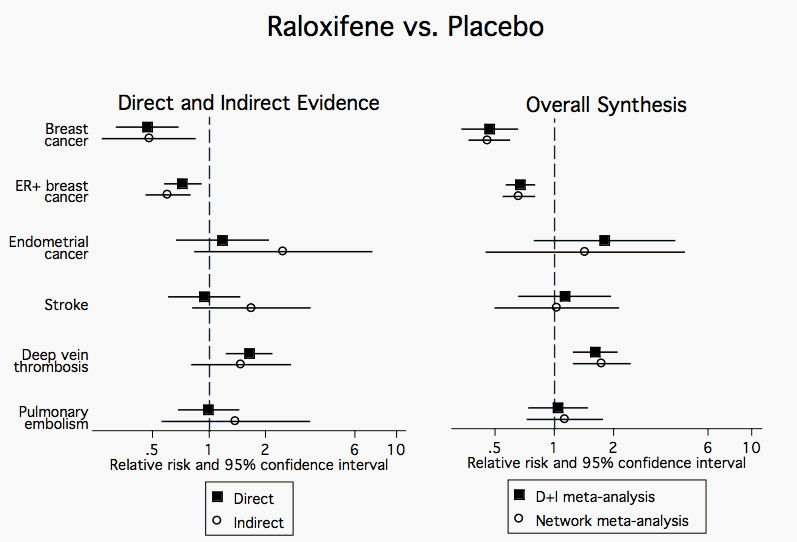|
||||
Monday, October 22, 2007 - 11:00 AM
A-1
INTEGRATING DIRECT AND INDIRECT COMPARISONS OF DRUG EFFICACY DATA WITH META-ANALYSIS
Purpose: Two interventions A and B may be compared directly in the same study or indirectly through a common reference C (e.g., A vs. C and B vs. C) to infer the relationship between A and B. Using direct and indirect data in a particular example, we examined two methods for synthesizing these kinds of data. Methods: Interventions in women at high risk for breast cancer include chemoprevention with tamoxifen or raloxifene, or usual care. We used two methods to estimate the relative risks (RRs) of raloxifene vs. placebo and tamoxifen vs. placebo by combining direct and indirect data from four trials for six outcomes. The first method (D+I meta-analysis) calculates the direct and indirect effects separately, and then combines them. The second (network meta-analysis) estimates adjusted effects in a multivariate setting. Both include random effects. Results: Four eligible randomized trials performed pairwise comparisons: BCPT (tamoxifen vs. placebo); MORE and RUTH (raloxifene vs. placebo); and STAR (tamoxifen vs. raloxifene). The figure juxtaposes direct and indirect RRs and their combination using the two methods. Similar findings were seen for tamoxifen vs. placebo. When direct and indirect evidence are consistent with each other (e.g., for breast cancer), their combination results in more precise estimates, and both methods yield similar results. This may not be true when direct and indirect RRs imply effects of different magnitude (e.g., endometrial cancer) or direction (e.g., stroke). Conclusions: When direct and indirect evidence are inconsistent, direct evidence is generally preferred. However, a decision analysis may compare all three interventions, necessitating the use of one of these methods to incorporate all available evidence. In such cases, we would suggest examining results using both methods especially when effects are of different magnitude or direction.


